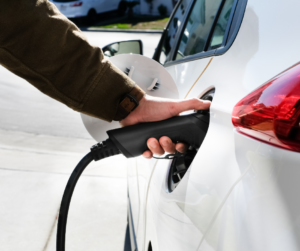Electric Vehicle Charger Safety and Best Practices

Electric vehicles (EVs) are becoming increasingly popular as a sustainable mode of transportation. As more people make the switch to electric cars, the need for Electric Vehicle Charger (EV charger) safety and best practices becomes paramount. Ensuring the safe installation, usage, and maintenance of EV chargers not only protects the user but also helps extend the lifespan of the equipment. In this article, we’ll explore essential tips and best practices for EV charger safety.
Choose a Certified Charger: When selecting an EV charger, it’s crucial to opt for one that is certified by a recognized authority like UL (Underwriters Laboratories) or CSA (Canadian Standards Association). Certification ensures that the charger has been tested for safety and meets industry standards.
Proper Installation: Installing an EV charger correctly is vital to its safety and efficiency. Consider hiring professionals, like MC Power Companies, to handle the installation. We can ensure that the charger is connected to a dedicated circuit and that the wiring is suitable for the charger’s power requirements.
Location Matters: Choose an appropriate location for your EV charger. It should be placed in a well-ventilated area away from direct sunlight, rain, and extreme temperatures. Ensure that it’s easily accessible but not in a spot where it might be exposed to physical damage.
Use the Right Outlet: Always use the proper outlet and plug for your EV charger. Don’t use adapters or extension cords, as they can overheat and cause a fire hazard. The charger should be directly connected to a compatible electrical socket.
Regular Maintenance: Like any other piece of electrical equipment, EV chargers require maintenance. Periodically inspect the charger for visible damage or wear and tear. If you notice any issues, contact a qualified technician to perform repairs.
Surge Protection: Consider installing a surge protector for your EV charger. Electrical surges can damage the charger and pose safety risks. A surge protector can help safeguard your equipment.
Cable Management: Properly manage the charging cable to prevent tripping hazards. Many chargers come with cable management features to keep the cord neat and tidy when not in use.
Ground Fault Circuit Interrupter (GFCI): Some EV chargers have built-in GFCI protection, which can help prevent electric shocks in case of a ground fault. Ensure that your charger has this safety feature, and if not, consider installing a GFCI outlet.
User Education: Educate yourself and other users about the safe operation of the EV charger. Understand the manufacturer’s guidelines and teach others how to use it correctly. Avoid overloading the circuit by running multiple high-power appliances simultaneously.
Emergency Response: Have a plan in place for handling emergencies such as electric shock or fire. Know the location of fire extinguishers and how to turn off power to the charger in case of an emergency.
Electric vehicle chargers are an integral part of the EV ownership experience, and safety should always be a top priority. By following these best practices for EV charger safety, you can help ensure the longevity of your equipment and protect yourself, your property, and the environment. Safe charging practices contribute to the continued growth of electric vehicles as a sustainable mode of transportation.
